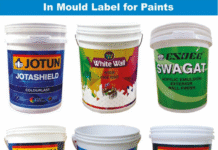During our recent interaction with Windmoeller & Hoelscher, the manufacturer and supplier of CI flexo and rotogravure presses, Karan Sud, the company’s assistant manager sales for India, highlighted facts pertaining to both the technologies and commented on the significance of both, something that we have been trying to do within several articles starting from S Chidambar’s ‘Flexo versus Gravure’ in our April issue that spoke of the relative merit of each process to our subsequent interview of Nadeem Mohammad in our May issue, ‘Paharpur votes for Gravure.’ Our June issue carried the views of SB Packaging’s Amit Banga on the subject.
According to Karan Sud of W&H India, when it comes to certain demographics, both printing processes inherently capitalize on different market challenges. “Geography and market conditions play an essential role in industrial buying decisions. The set of job requirements, availability of consumables and environmental conditions, among many other factors, are responsible for a printing house to choose the technology it would need to support their customers.”
W&H believes that both technologies complement each other and help the converter in maintaining a required balance when it comes to serving the Indian market. “We feel that each of these technologies has its own space in the market and none of them can be compared directly to the other to find a resultant best. Rotogravure has advantages in some areas that are specific to it and similarly flexo in some areas,” says Sud.
The future for flexo and gravure in Indian conditions
During the Shift_019 conference at Aerocity in New Delhi, a speaker also mentioned that the Indian market requirements have been in favor of rotogravure printing technology when it comes to big job-order size. The cost and variety of rotogravure equipment that is already available in the Indian market adds to its local viability.
In India, gravure presses range from strong local suppliers to global high-end suppliers such as Bobst and Windmoeller & Hoelscher. Further, industrial buyers have the viability of choosing from a wide range of raw material and cylinder suppliers, which has contributed to the success of rotogravure in India. While CI flexo presses have been coming to India since early 2000s, the number of presses coming to India between 2000 and 2010 was only on an average 1-2 presses per year. In the last five years, almost 5 to 10 presses are coming to the country each year. To support this growth of flexo, many trade suppliers of plates have come up in the last decade which has almost solved the problem of procuring high quality flexo plates. High-tech trade shops have been expanding proactively in multi-locations along with the CI flexo market in the last couple of years. “The quality of plates and other consumables have also increased as per market requirements,” Sud mentions.
Need for faster printing presses
While it is important to have faster presses to benefit from economies of scale, it is also important to address the fact that the industry is now facing a challenge of reducing job lengths, quick turnaround times and an ever-increasing need for high quality packaging. This is where better technology helps. Both rotogravure and flexo presses have been developing and refining over the years to support converters in this aspect. High-speed narrow web flexo label presses have been around for a long time but the demand for faster presses in wider web processing is also increasing. Rotogravure and CI flexo presses with speeds higher than 500 meters a minute have already made their way in India.
Printing press speed is subject to various parameters including press-specific factors like machine design and automation modules, as well as process variables such as inks, cylinders, plates, doctor blades and even the substrate. Both speed increment and changeover time reduction has been achieved in rotogravure presses through patented features, improved web-paths and unique automation modules. Latest generation rotogravure, which is specifically designed for ultra-short rotogravure jobs such as W&H’s Dynastar, is being offered to customers in India. As far as flexo is concerned, the automation technologies in CI flexo presses have also come a long way in reducing the overall changeover times. “Most of us can recall printing on geared presses where the changeover times were quite long and sometimes ran into hours. We are now talking about changeovers in just a couple of minutes,”says Sud.
“To give you a single example, in a study conducted together with several convertors it was found out that approximately 50% of the printing press downtime comes due to color matching errors. W&H has innovated a system which supports our customers to reduce this downtime by half – using machine-assisted suggestions for correcting the color in guaranteed two runs, that is, achieving a delta E value of less than 2. The system has been installed in several locations in India and has been running very successfully.”
Improvement in flexo plate making technology
Digital flexo plate technology has improved with flat top dots and dots with engineered surfaces. Since the last few years there has been significant development in plate technology for flexo, which has helped in bridging the gap to a large extent between rotogravure and flexography in terms of print quality. While wide web CI flexo was predominately being used for surface print applications such as oil and milk film, the market is now quite open to discuss flexo for reverse print lamination applications, which was formerly the area of rotogravure.
Nevertheless, it is still quite challenging to do a one-to-one conversion of all the jobs from rotogravure to flexo. As the processes are different, one must especially adapt the prepress to be able to run it on a CI flexo press. It was a bigger challenge five years ago but not anymore with the arrival of digital prepress software and plate technology.
Flexo advantages over gravure
From the technology point of view, flexo has some advantages vis-a-vis rotogravure presses.It is advantageous for printing extensible or stretchable substrates such as PE films at very high speeds. It has better control of extensible films in terms of print registration and film handling. Make-ready waste and changeover times are reduced. Changeover time is generally higher in gravure press compared to flexo unless they are very highly automated, which means the cost of a changeover is also higher. The space requirement is also much lesser in flexo compared to rotogravure. In general process, the ink consumption is also lower.
Conclusion
Sud concludes, “For me, India will continue to remain a rotogravure dominated market for the next few years as conversions from one process to another cannot be done so quickly. That being said it is also very encouraging to see the growth of CI flexo over the last couple of years. We believe that converters are preparing themselves to be equipped in such a way that they can diversify their portfolio and use the right technology for their processes”.











